(I do not claim to provide any original ideas in the article below, only a synthesis of what is readily available in books, on the internet, and from a long personal history of trials and errors in endurance sports.)
The LSD (Long, Slow, over-Distance) training session is vital to have in the training rotation of any ski paddler who is interested in performing well in 2+ hr races, and it comprises a significant part of an athlete’s base aerobic training. During the racing season, it’s important to include the LSD session about once per week.
All of us are capable of avoiding the bonk, we simply have to train for it and not rely on luck and happenstance. There are two main parts to the equation – avoiding early depletion of liver glycogen, and training the body to burn fats more efficiently and at a higher rate.
When we train and race, at any intensity longer than a short sprint, we utilize both glycogen (stored carbohydrate / glucose), and fatty acids (from stored fat) as fuel. Glycogen is the favored fuel at shorter distances and higher intensity because it’s more quickly oxidized and because it takes less oxygen to get a certain amount of energy from it. To put it another way, glycogen gives us more bang for the buck. However, and this is the crux, glycogen is only available in limited supply within the body. And, you cannot replace it as quickly as you can burn it.
Estimates are that our liver stores about 400 kcal worth of glycogen and that our muscles store about 1400 kcal worth. During exercise, the muscle glycogen is the preferred source and the liver glycogen is secondary because the liver has another task – maintaining normal blood sugar (glucose) levels, or more specifically, guarding against hypoglycemia. How much of the 1400 kcal is available for a paddler, I am not certain. Probably not all of it is readily available due to sport specific muscle use.
An athlete burns about 1000 kcal per hour at marathon race pace. Larger athletes burn at a higher rate and vice versa. With simple math, we see that there is about 1.5-2 hr of glycogen available during a race if that were our only fuel.
Drinking fluids during a race can give us up to about 400 kcal per hour, but as more often is the case, closer to 300 kcal per hour based on common consumption. This limit is pretty much non-negotiable because of the body’s finite rate at absorbing water, calories, and electrolytes. Adding this to the above mix gives us about 2 1/2 hrs max if we get our energy from consuming 300 kcal per hour of sports drink and deplete the glycogen stores from our muscles and liver.
So then what? What happens when we burn up all our glycogen and have drank all we can? We bonk hard. We get hypoglycemic, tired, nauseous, light-headed, clammy, cold. What revives us usually? Another Gu packet or anything that boosts our blood sugar levels. All this, and the typical athlete is still carrying around 63,000 kcal of fat (180 lb, 10% body fat). My guess is that it would probably be unwise (if the process of natural selection can be personified) for the body to allow depletion of all of its fat reserves, so if we suggest that even 10% of the stored fat in this example is readily available as fuel, that leaves us with 6,300 kcal from fat which is 2 to 3x that available from glycogen and ingested sugars.
So then, how do you avoid depleting liver glycogen so early AND how do you get the body to burn fat better, i.e. faster and earlier?
1. Train your muscles to burn fats. During your LSD sessions, you’ll want to burn through your muscle glycogen stores first which will take about 2 to 3 hrs. After that point, you will be forced to burn fats because there is no muscle glycogen left. It’s important to maintain a nice slow, steady pace for these sessions. They are not hard or high intensity sessions, just fatiguing, and that’s what you want. By continuing past glycogen depletion, it will stress the muscles to adapt to burning your fat stores more efficiently which means that your fatty acid oxidative enzymes and those pathways will be selected and induced and that you will, over time, adapt better to that energy source.
During these paddles, drink an adequate volume of water and electrolyte drink, the volume of which would be highly variable due to body weight and air temperature.
Another way to LSD train like this might be to do a morning 2 hr session, refuel with only water, electrolytes, maybe a small fat or protein food source, and then do another 2 hr session less than 4 hours after you’ve finished the first.
You can do the LSD session on an empty stomach (by skipping the previous meal). This is not the same as starvation training because you will be consuming a normal amount of kcal per day. The difference is that these LSD sessions are done purposefully and with the idea of improving the base aerobic conditioning of the athlete, and that means by burning fats.
Do you want to assess how good you are right now at burning fats for fuel? Easy. Eat less than 20 grams (80 kcal) of carbohydrates per day for 3-4 days, and go for an hour run or a controlled (near shore, with buddies) paddle. If you’re a poor fat burner, you’ll feel like you’re bonking in 30 minutes. You’ll be able to continue, but at a slow, steady, survival pace and you’ll feel pretty listless. If you continue with this near ketotic or ketotic diet, you will adapt quite readily. In 3-4 weeks, you should feel pretty normal during your training sessions and have probably 90% of your marathon race pace ability. But, 90% is obviously not what we want. To get to 100%, you would need to add more carbohydrates to the diet so that you can get the benefits of having both high functioning glycogen AND fatty acid energy supply systems. When I first did this 2 yrs ago, I could run about 30 minutes before I felt bonk-y. But, I could continue past 2 hours without feeling any worse. As an aside, a ketotic or near ketotic diet is not a harmful way of eating despite the pseudo-dangers that you might hear or read. The concepts of fats only being “burned in a carbohydrate fire” and that you’ll consume your own muscle tissue and that the brain needs ingested glucose to survive are hogwash. Don’t worry about these concepts because they are more confusing to a layman than their actual physiology. Of course, further discussion about what a proper diet is, is tantamount to a discussion of what the proper religion is, which is a whole ‘nother topic best left for another time.
2. Save you liver glycogen for as long as you can. The way to do this is to start races with low (meaning normal) blood insulin levels, normal blood sugar (glucose) levels, and high muscle glycogen levels. What is insulin? Insulin is a hormone made by the pancreas. It responds to higher than normal blood sugar levels by increasing in concentration in the bloodstream. Insulin then lowers blood sugar levels by “pushing” it into muscle cells and liver cells so that the glucose can be stored as glycogen, and by helping store the excess sugar in fat cells as fatty acids (lipogenesis). So far, so good. The “bad” news for athletes is that while blood insulin levels are high, the body is put into an anabolic (storing) state, and as a result, fat burning is essentially turned off. If you then start a race 30 min after having consumed a sugar beverage or energy bar, you will not be able to get at your stored fat as readily because high insulin levels prevents lipolysis (fat breakdown). So you will burn through your muscle glycogen, tap into your liver glycogen much too early, and wham! you bonk at about 2 hours.
Logic tells many of us the in the few hours before a long race that we need to keep “topping off” our tanks, so we eat energy bars and sip sports drinks until about 30 minutes before the race. But, step back and think about this for a moment. If we eat a good breakfast 3-4 hours earlier, we’ll have maybe 500 or 1000 kcal intake that morning, replenishing what we burned sleeping through the previous night (for a morning race). What makes us think that we need even more sugars at 2 hours, 1 hour, 30 minutes before the start? For years, I did that, and for years I bonked sporadically.
For the best performance in a long race, eat breakfast 3-4 hours before the start. Insulin will skyrocket shortly afterwards and should return to normal levels by the time of the race start. From the end of the initial sprint off the line, you will have access to both fat and full glycogen stores. Definitely consume a sugary sports electrolyte drink during the race, because in a race, we’re more interested in speed over time as opposed to simple efficiency, and the best way to do this is to maximize fuel availability. ~Erik
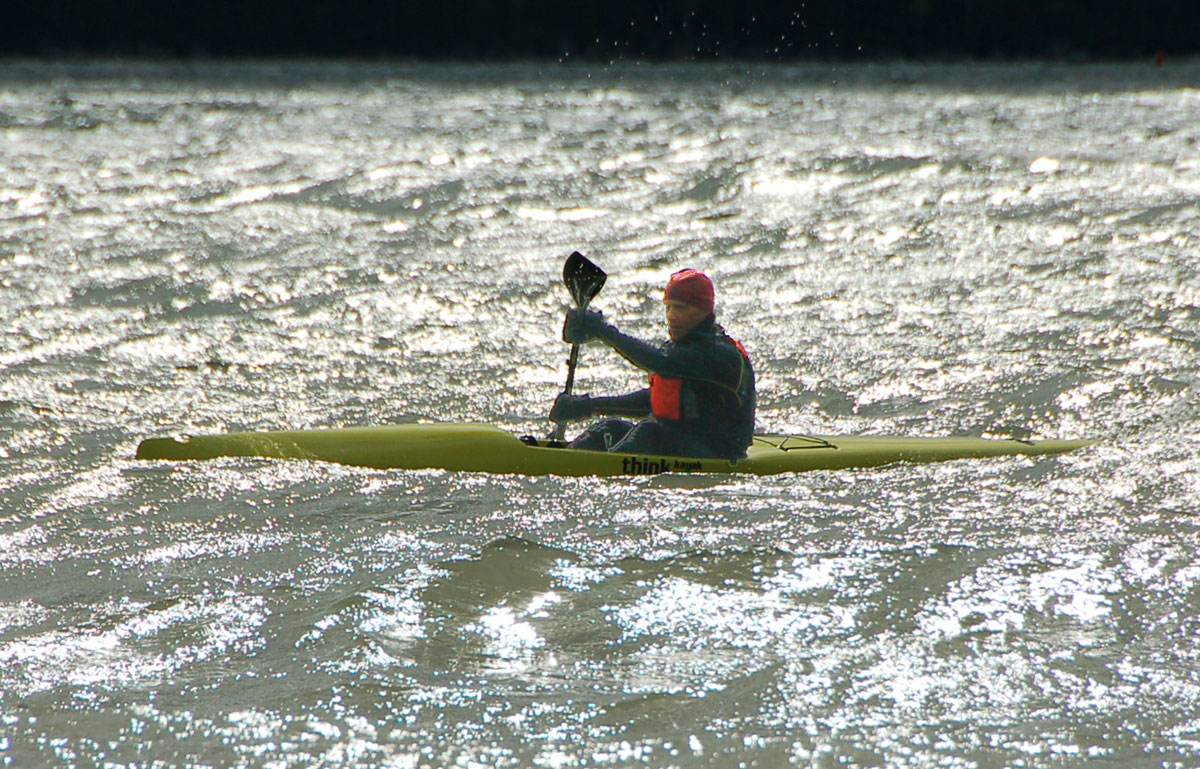

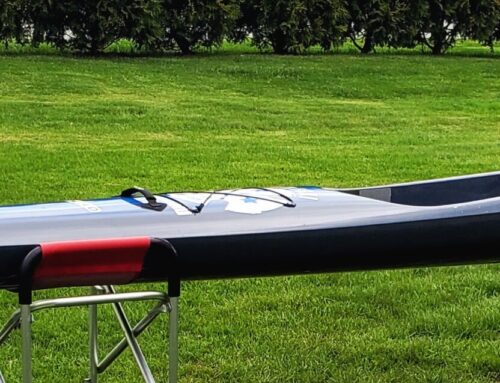
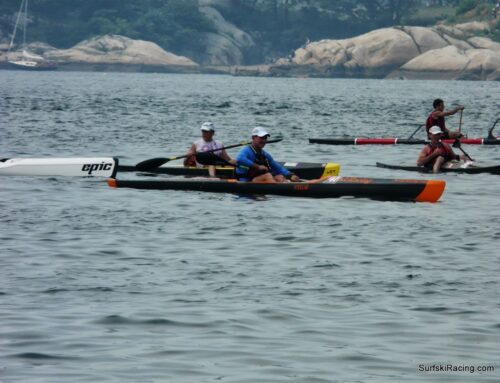
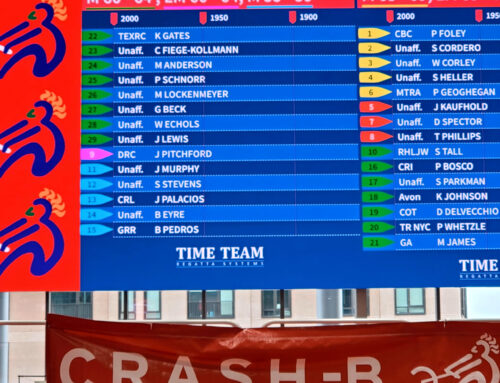
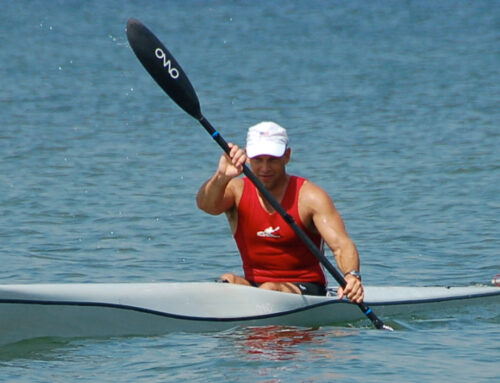
Leave A Comment
You must be logged in to post a comment.